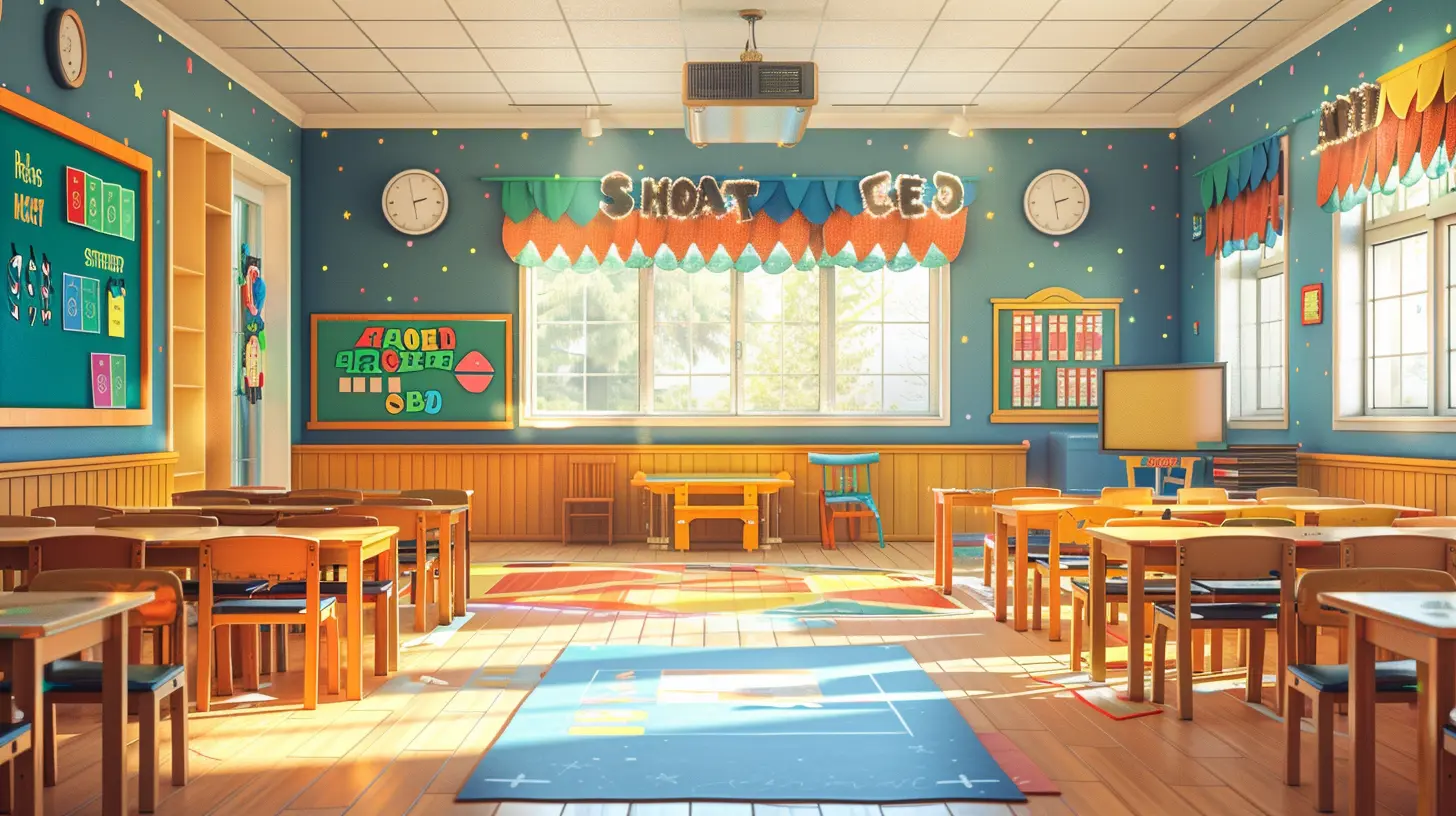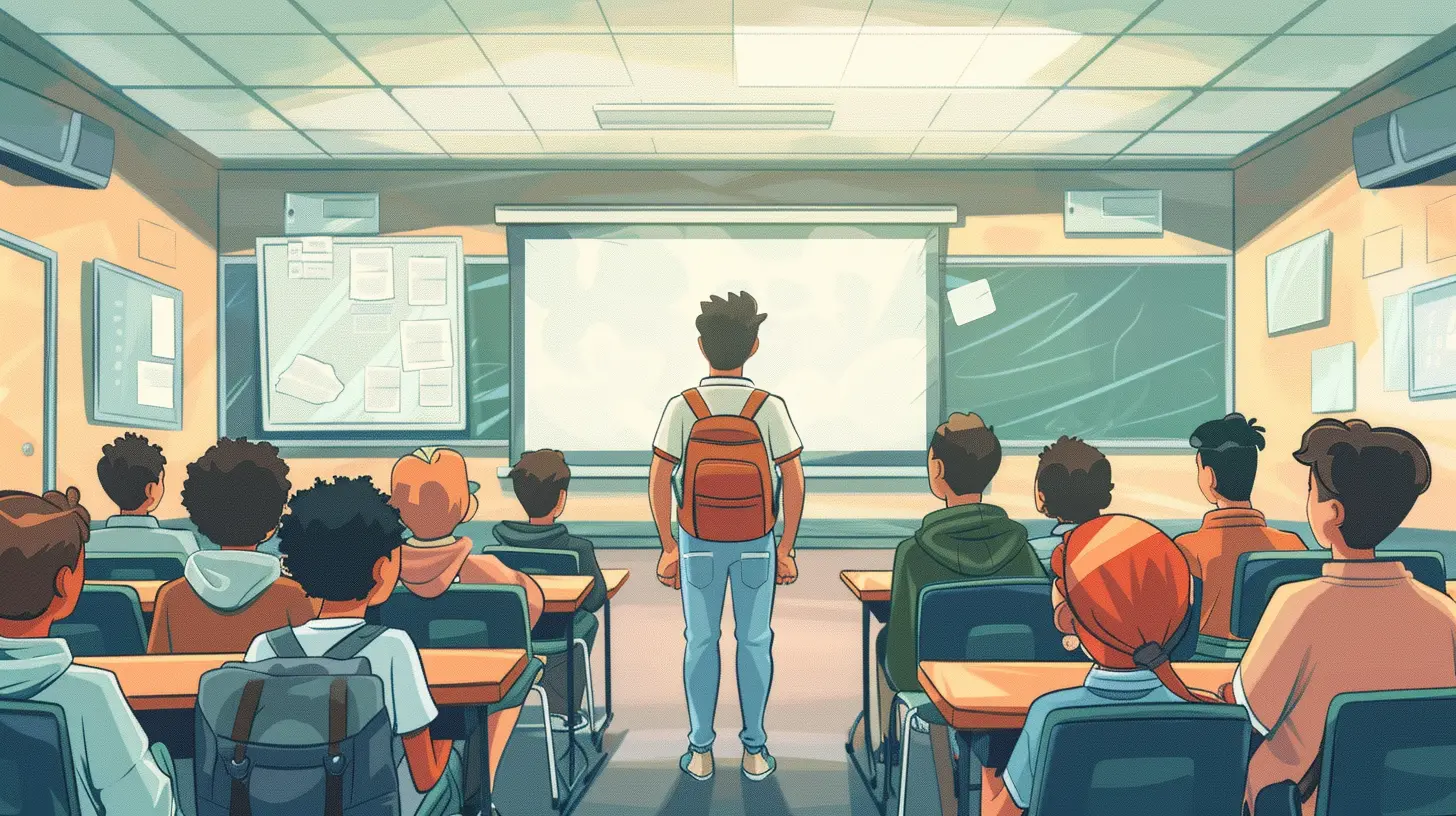Conducting School Safety Audits: A Step-By-Step Guide
2 August 2025
It’s a bright Monday morning. Birds are chirping, backpacks are slung over shoulders, and the school gates swing open to welcome a sea of vibrant young minds. It’s the image we all imagine when we think of a school—a place of safety, learning, and dreams. But behind that ideal picture, there’s a very real responsibility we carry. And that is to keep our schools safe—truly safe.
Safety doesn't just mean a fire extinguisher here and a camera there. It means creating an environment where students, teachers, and staff can thrive without fear. And that’s where school safety audits come in.
If you're scratching your head about where to begin, you're in the right place. Buckle up, because we’re diving deep—step by step—into how to conduct a thorough school safety audit. Let’s roll!
What Is a School Safety Audit Anyway?
Before we wade into procedures and checklists, let's clear the air.A school safety audit is a systematic review of all physical, emotional, and procedural safety measures within a school. Think of it like a full body check-up, but for a school building and its ecosystem. It's a way to identify vulnerabilities, improve preparedness, and ensure compliance with safety standards.
Just like you wouldn’t skip a doctor’s visit when something feels off, schools shouldn’t skip safety audits. A missed warning sign today could turn into tomorrow’s headline.
Why Bother with a Safety Audit?
Let’s be real—school administrators wear a lot of hats. Adding “safety auditor” to the mix might sound like another chore on an already packed to-do list.But here’s the thing: safety isn’t optional—it’s foundational.
Here’s why you need those audits:
- 🛡️ Protects lives – The safety of students and staff is non-negotiable.
- 📋 Identifies risks – No more surprises from faulty doors or blind spots in hallways.
- ✔️ Meets legal requirements – Many states and countries mandate audits.
- 📈 Boosts community confidence – Parents sleep better knowing their kids are in good hands.
Still think it's just a fancy checklist? Think again.
Step 1: Form Your Audit Team
Imagine trying to write an entire school play by yourself—from costumes to stage lighting. Sounds exhausting, right? That’s exactly why your first step is to build a team.A diverse audit team brings different eyes, experiences, and insights to the table. Here’s who you’ll want:
- Administrators – They understand policies and budgets.
- Teachers – They know classroom dynamics better than anyone.
- Maintenance staff – They understand the building’s nuts and bolts.
- Security officers – These are your eyes on current threats.
- Parents and students – Fresh perspectives you might not expect.
Teamwork makes the safety dream work. Seriously.
Step 2: Define the Scope of Your Audit
You wouldn’t walk into a grocery store without a shopping list, right? Same logic applies here.Define what your audit will cover. Will you focus on physical infrastructure—like locks, lighting, and exits? Or dive into policies around bullying, emergency drills, or communication protocols?
Common areas to include:
- 💡 Physical safety (buildings, playgrounds, emergency exits)
- 📚 Emotional and mental safety (bullying policies, student counseling)
- 📞 Communication systems (PA systems, parent alerts)
- 🚨 Emergency preparedness (fire, lockdown, evacuation protocols)
- 👮 Visitor protocols and building access
The more detailed your scope, the better your outcomes.
Step 3: Review Existing Policies and Records
Time to dig through the archives. Pull out every safety policy, incident report, drill record, and maintenance log you can find. You want a bird’s-eye view of what’s been happening, what’s working, and what’s failing.Ask questions like:
- When was our last fire drill?
- What is our lockdown protocol?
- Have there been any safety incidents in the past year?
- Are there inspection records for fire extinguishers and alarms?
This is your school’s safety "report card." Take the time to understand it.
Step 4: Conduct On-Site Observations
This step is boots-on-the-ground. It's time to walk the halls, peek into corners, and test every lock, alarm, and light switch.Here’s a quick observational checklist to guide you:
- Are exits clearly marked and unblocked?
- Is the lighting adequate in hallways and bathrooms?
- Do classroom doors lock securely from the inside?
- Are security cameras functioning and well-placed?
- Is playground equipment in good condition?
- Are fencing and gates intact and secure?
Don’t just look—listen. Talk to students and teachers. You’d be amazed at what they notice every day.
Step 5: Interview Staff and Students
Safety isn't only about cameras and locks. It’s about how safe people feel. Numbers and checklists can miss what voices catch.Set up informal interviews or anonymous surveys with:
- Students – Do they feel safe walking to the bus stop? What about in the cafeteria?
- Teachers and staff – Do they know the emergency procedures? Do they feel heard?
- Support staff – They often have brilliant insights on visitor flow or traffic issues that others overlook.
Empathy is a powerful safety tool. Use it.
Step 6: Perform Risk Assessments
Now we’re getting into high gear. Risk assessments help you prioritize. Not all safety issues are created equal.Use a simple 2-question matrix:
1. How likely is this to happen?
2. How severe would the impact be if it did?
So, a cracked sidewalk might not be deadly, but if kids trip over it daily? It’s a problem. A malfunctioning fire alarm? That’s an urgent, high-risk issue.
Categorize everything into:
- High Risk (urgent, immediate action)
- Medium Risk (needs solving soon)
- Low Risk (monitor and review)
Sorted? Awesome. Time to act.
Step 7: Make a Plan for Improvements
You’ve done the digging, now comes the building. Create a practical action plan with deadlines, responsibilities, and budgets.Keep it simple and clear:
| Issue | Action Needed | Responsible Person | Deadline | Budget |
|-------|----------------|--------------------|----------|--------|
| Broken gate lock | Replace with secure lock | Facilities Manager | Oct 10 | $200 |
| Outdated emergency plan | Revise and distribute updated version | Principal | Oct 15 | $0 |
| Poor hallway lighting | Install LED lights | Maintenance Supervisor | Oct 20 | $1,000 |
Bonus tip: Celebrate small wins. Every locked door or fixed bulb makes a difference.
Step 8: Communicate Your Findings
You don’t want your safety audit to collect dust on a hard drive. Share your findings with everyone involved—transparently and tactfully.Hold a meeting for staff. Send out a letter to parents. Post updates on the school website. Let the community know:
- What’s been improved
- What’s still in progress
- How they can help
People trust schools that keep them in the loop. You're not just doing the audit—you’re creating a culture of care.
Step 9: Train, Drill, and Educate
You’ve patched the holes, reinforced the doors—now it’s time to make sure everyone knows what to do when the storm hits.- Schedule regular emergency drills.
- Hold staff training sessions.
- Offer student workshops on bullying, online safety, and conflict resolution.
- Keep communication protocols updated.
Knowledge beats panic. Always.
Step 10: Schedule Next Audit and Keep It Ongoing
Safety audits aren’t a one-and-done deal. They’re a habit, not a project.Set a date for your next audit—ideally once a year. Keep records updated. Review your risk assessments every semester. The more you normalize safety check-ins, the stronger your school becomes.
It’s like going to the gym. Start small. Stay consistent. See massive results over time.
Final Thoughts: Don't Wait for the Sirens
A school safety audit might not be as thrilling as a field trip or a school dance, but it’s the heart that keeps the whole system alive. It’s the quiet work behind the scenes that makes everything else possible.You’re not just checking fire alarms or fixing hinges. You’re creating a sanctuary. You’re showing every child and every parent that their safety matters.
So pull out your clipboard, gather your team, and begin. Your school deserves nothing less.
all images in this post were generated using AI tools
Category:
School SafetyAuthor:

Bethany Hudson
Discussion
rate this article
1 comments
Ella McKnight
Great article! School safety audits are essential for creating a secure environment for our kiddos. It's like giving our schools a health check-up! Let's ensure our students feel safe and ready to learn. Keep up the great work!
August 22, 2025 at 11:03 AM

Bethany Hudson
Thank you for your kind words! I completely agree—safety audits are vital for fostering a secure learning environment. Let's prioritize our students' safety together!


